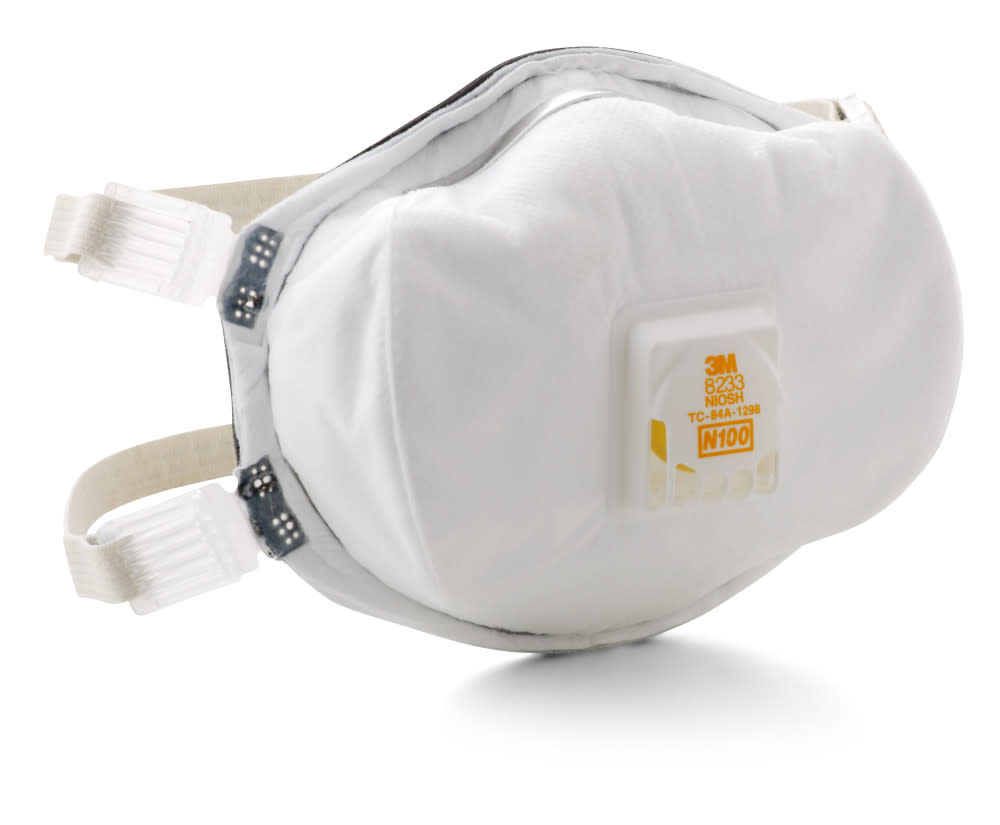Some items are no longer available. Your cart has been updated.
This discount code cannot be used in conjunction with other promotional or discounted offer.
Sale price USD $0.99 Regular price

OR

3M Particulate Respirator 8233 N100
3M? Particulate Respirator 8233, N100 is a disposable particulate respirator that is designed to help provide reliable respiratory protection of at least 99.97 percent filtration efficiency against certain non oil based particles. Soft inner material provides added comfort while the cup shape design makes the respirator spacious and durable. Adjustable noseclip helps provide a custom secure seal. Fully adjustable head straps help provide a secure seal. The respirator incorporates 3M’s proprietary technology with advanced electrostatically charged microfiber filter media designed for ease of breathing. This respirator is compatible with a variety of protective eyewear and hearing protection. Recommended applications include foundry operations, grinding, petrochemical manufacturing, processing of minerals, and welding. Industries in which this respirator is commonly used includes construction, general manufacturing, mining, oil and gas, and transportation. Fitted with a 3M Cool Flow? Exhalation Valve, this respirator is ideally suited for work situations involving heat, humidity, or long periods of wear. The 3M? Cool Flow? valve is designed to release your hot, humid exhaled breath quickly, helping to reduce heat buildup. This particulate respirator is NIOSH (National Institute for Occupational Safety and Health) approved for environments containing certain non oil based particles and provides N100 (99.97%) filter efficiency. Respirator helps provide protection against certain OSHA substance specific contaminants including lead, MDA, arsenic, and cadmium (excluding asbestos). Breathing hazardous particles can pose a risk to your health. NIOSH, a Federal government regulatory agency, has tested and approved the 3M Particulate Respirator 8233, which is designed to help reduce exposure to certain airborne particles.
Comment